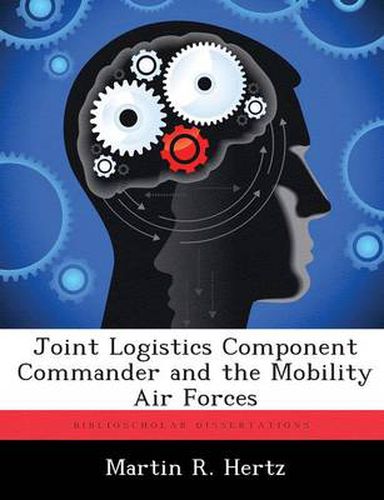Readings Newsletter
Become a Readings Member to make your shopping experience even easier.
Sign in or sign up for free!
You’re not far away from qualifying for FREE standard shipping within Australia
You’ve qualified for FREE standard shipping within Australia
The cart is loading…






This title is printed to order. This book may have been self-published. If so, we cannot guarantee the quality of the content. In the main most books will have gone through the editing process however some may not. We therefore suggest that you be aware of this before ordering this book. If in doubt check either the author or publisher’s details as we are unable to accept any returns unless they are faulty. Please contact us if you have any questions.
Though joint operations have been the hallmark of U.S. military doctrine for many years, a systematic study of joint logistics and the role of the U.S. Air Force has not been undertaken. This neglect has allowed a significant question to remain unanswered, specifically, Would the theater Commander-in-Chief (CINC) benefit from a codified, doctrinally supported theater logistics commander? Moreover, no study has looked at this question from the unique perspective of the mobility air forces (MAF), and their role in joint theater leadership. This study grappled with the question of joint theater logistics command and control, especially from the MAF point of view. It looked at whether there can be a logistics component, if it could bring any benefit to the CINC, and finally, how the mobility air forces would be effected. A logistics component can exist: U.S. law allows a logistics component and doctrine supports its creation as an option for the CINC. OPERATIONS DESERT STORM, RESTORE HOPE and JOINT ENDEAVOR show that the U.S. has successfully used a theater logistics organization and that the concept works. These same examples also show how an ad hoc organization has serious shortfalls in the support it can provide. Current leadership is pursuing theater logistics implementation as shown by joint vision statements and the logistics plans of the various CINCs. A logistics component can bring benefits to the CINC. The JFLOGCC controls the logistics process from the theater and prevents any confusion about the requirements and priorities of the CINC.
$9.00 standard shipping within Australia
FREE standard shipping within Australia for orders over $100.00
Express & International shipping calculated at checkout
This title is printed to order. This book may have been self-published. If so, we cannot guarantee the quality of the content. In the main most books will have gone through the editing process however some may not. We therefore suggest that you be aware of this before ordering this book. If in doubt check either the author or publisher’s details as we are unable to accept any returns unless they are faulty. Please contact us if you have any questions.
Though joint operations have been the hallmark of U.S. military doctrine for many years, a systematic study of joint logistics and the role of the U.S. Air Force has not been undertaken. This neglect has allowed a significant question to remain unanswered, specifically, Would the theater Commander-in-Chief (CINC) benefit from a codified, doctrinally supported theater logistics commander? Moreover, no study has looked at this question from the unique perspective of the mobility air forces (MAF), and their role in joint theater leadership. This study grappled with the question of joint theater logistics command and control, especially from the MAF point of view. It looked at whether there can be a logistics component, if it could bring any benefit to the CINC, and finally, how the mobility air forces would be effected. A logistics component can exist: U.S. law allows a logistics component and doctrine supports its creation as an option for the CINC. OPERATIONS DESERT STORM, RESTORE HOPE and JOINT ENDEAVOR show that the U.S. has successfully used a theater logistics organization and that the concept works. These same examples also show how an ad hoc organization has serious shortfalls in the support it can provide. Current leadership is pursuing theater logistics implementation as shown by joint vision statements and the logistics plans of the various CINCs. A logistics component can bring benefits to the CINC. The JFLOGCC controls the logistics process from the theater and prevents any confusion about the requirements and priorities of the CINC.